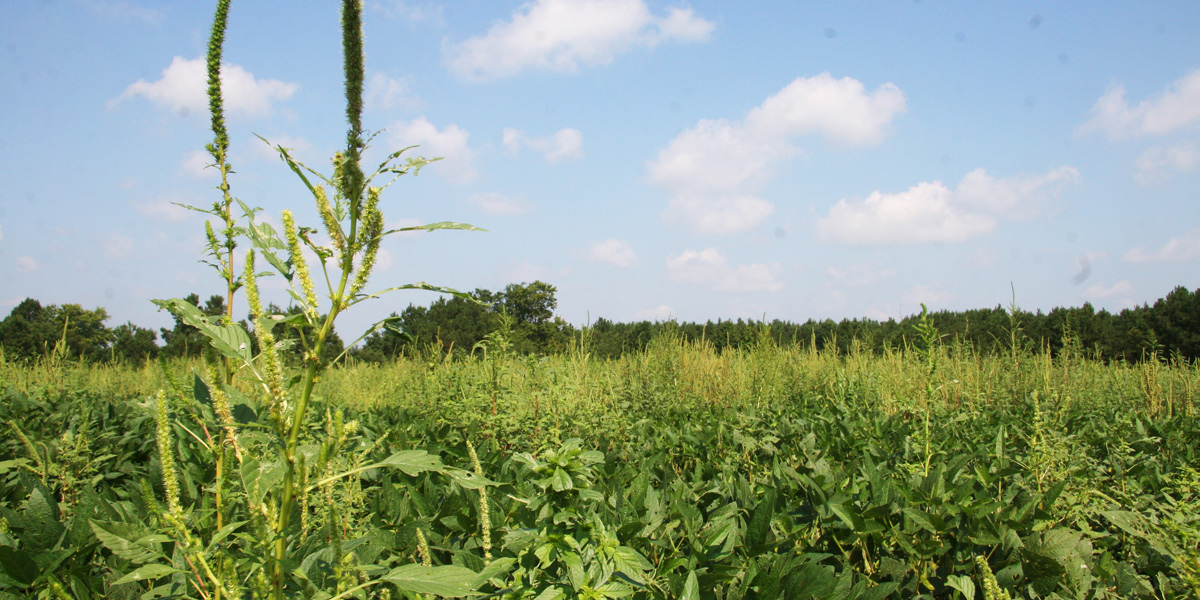
Rise of herbicide-resistant "superweed" means the days are numbered for 2,4-D- and dicamba-tolerant GMO crops
Research at Kansas State University has confirmed dicamba and 2,4-D resistance in a Palmer amaranth weed population collected from a long-term conservation tillage study at the Kansas State Agronomy Ashland Bottoms Experiment Field in southern Riley County.
This is the first confirmed case of resistance to dicamba and 2,4-D in Palmer amaranth, further magnifying the challenge to manage this weed for farmers using herbicide-tolerant GMO crops and herbicides instead of tillage to control weeds.
Palmer amaranth is viewed as one of the most economically damaging and difficult-to-control broadleaf weeds across the United States.
Previously, Palmer amaranth in Kansas has developed resistance to many groups of herbicides, including group 2 (ALS), 5 (atrazine), 9 (glyphosate), and 27 (HPPD) herbicides, leaving growers with very few options to manage this weed. Dicamba and 2,4-D (group 4) have been used for many years to help control Palmer amaranth, but farmers have complained about poor control in recent years.
Dicamba and 2,4-D herbicides are being relied upon to replace glyphosate in GMO cropping systems where glyphosate-resistant weeds have become a problem. The GMO industry has developed GM crops tolerant to 2,4-D and dicamba so that farmers can try to control weeds using those herbicides, instead of the now failed glyphosate. But now that weeds resistant to both herbicides have been found in Kansas, GMO 2,4-D- and dicamba-tolerant crops will also soon be obsolete.
Resistance to other herbicides
In addition to resistance to group 4 herbicides, preliminary research also indicates that this Palmer amaranth population survived application of group 27 (Callisto) and group 14 (Cobra) herbicides. Although resistance to group 27 herbicides in Palmer amaranth is increasing in Kansas State, this population appears to have more survivors (88%) and a much higher level of resistance than previously reported. The Kansas State data suggests a high percentage of survivors (69%) in response to Cobra treatment compared to a known susceptible population that was completely controlled.
Although group 14 herbicides can be effective in controlling pigweeds, thorough coverage on small weeds is essential for good control. The Kansas State researchers say they strongly suspect this population of Palmer amaranth is also resistant to atrazine, glyphosate, ALS herbicides, and perhaps s-metolachlor, based upon field observations.
These new developments show how GM crops are helping to drive intensive farming further up the same old chemically-intensive cul-de-sac. A new approach using agroecological techniques is long overdue.
Incidentally, palmer amaranth is nutritious and delicious, as well as being fast-growing and resilient to drought and disease, leading to its being named as one of the "crops of the future". In an alternative farming system, its rising dominance might be seen as a boon rather than a problem.
Main source: Kansas State University
https://webapp.agron.ksu.edu/agr_social/m_eu_article.throck?article_id=2110&eu_id=322
Image of palmer amaranth: Delaware Agriculture 2.0 Generic (CC BY 2.0)










